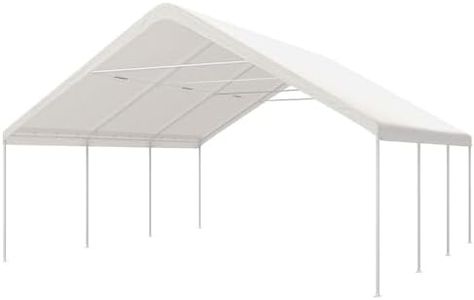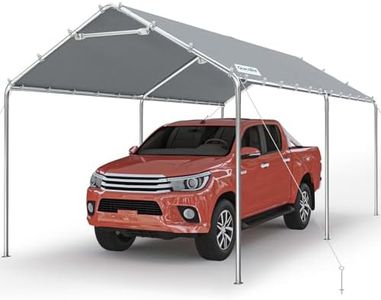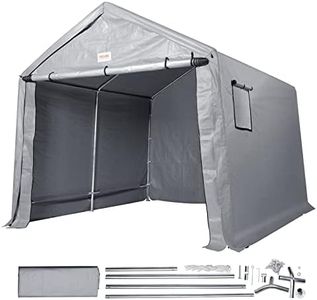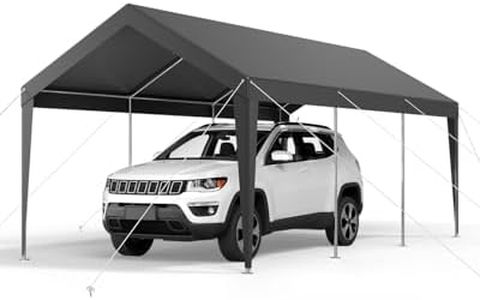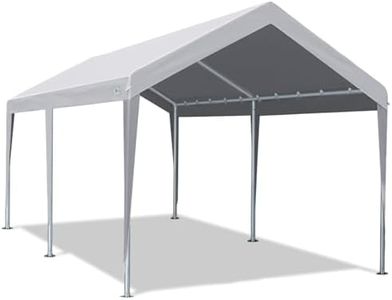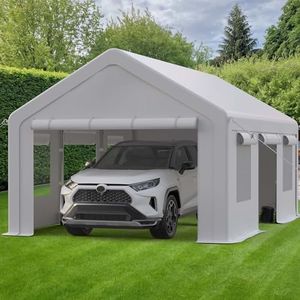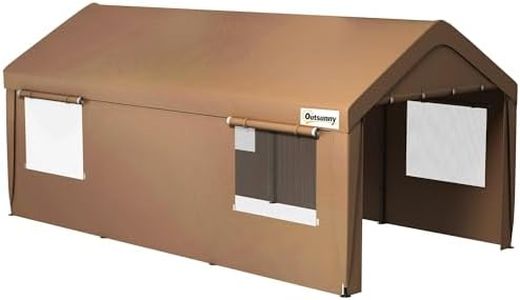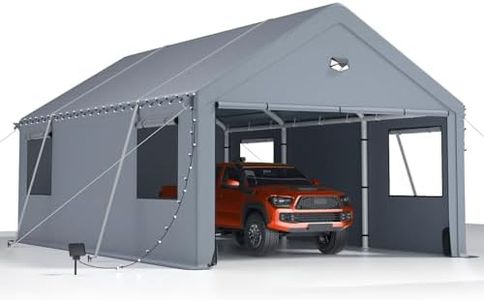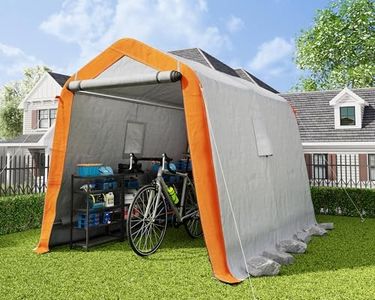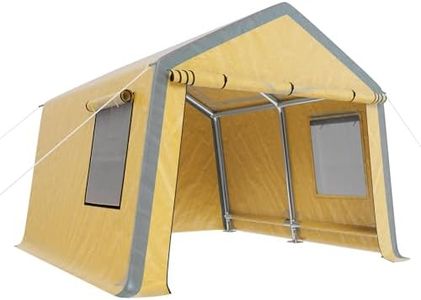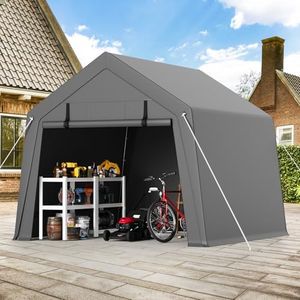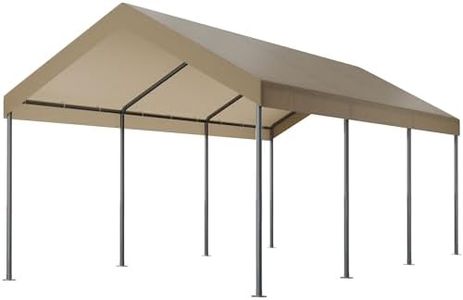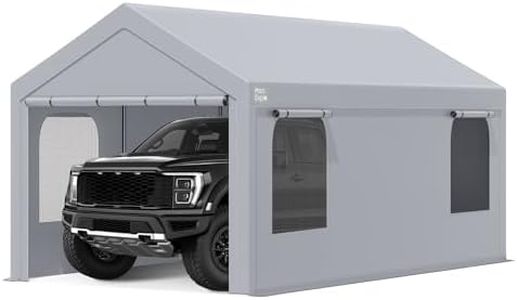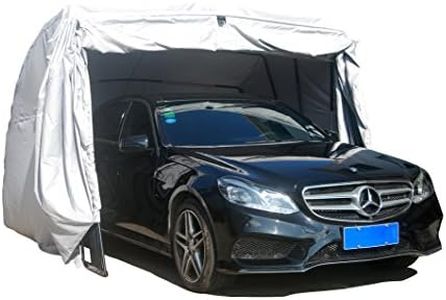We Use CookiesWe use cookies to enhance the security, performance,
functionality and for analytical and promotional activities. By continuing to browse this site you
are agreeing to our privacy policy
10 Best Portable Garages
From leading brands and best sellers available on the web.Buying Guide for the Best Portable Garages
Choosing the right portable garage involves thinking carefully about what you plan to store, where you’ll set it up, and how durable and convenient you need it to be. Portable garages are a flexible and practical solution for protecting vehicles, equipment, or belongings from weather and sun. Before you buy, consider what you want to shield from the elements, the local weather conditions, and how easy you need the setup and breakdown process to be. Paying attention to the most important features will help you find the best fit without feeling overwhelmed by technical jargon.Size and DimensionsSize and dimensions are simply the overall width, length, and height of the portable garage. This is crucial because the garage needs to accommodate whatever you plan to store—whether that’s a car, boat, bikes, or equipment. Sizes can range from small (just enough for a motorcycle or appliances) to large (big enough for boats or multiple vehicles). If you’re unsure, measure the largest item you expect to store and add space for movement and any additional storage. Choose a size that fits your available outdoor area but is also practical for your needs.
Frame MaterialThe frame material refers to what the main support parts of the garage are made from, typically steel or aluminum. This spec is important because it determines how sturdy and long-lasting your portable garage will be. Steel frames are heavier and usually more durable, handling strong winds and snow better, while aluminum frames are lighter and more rust-resistant, making them easier to move but not always as sturdy in harsh conditions. Think about your climate and whether you’ll need to move the garage often to decide which frame type works for you.
Cover MaterialCover material is what actually protects your belongings from rain, sun, and snow. The most common materials are polyethylene, polyester, or PVC-coated fabrics. Thicker and heavier-duty fabrics will generally last longer and stand up to tougher weather, but can be harder to handle. Lighter materials are easier to set up and move, but may wear out faster in sun or heavy rain. Consider how much exposure your garage will get and how often you want to replace the cover when deciding.
Anchoring SystemThe anchoring system is how the garage is kept securely in place. This is a big deal, especially if you get wind or storms. Common systems include ground stakes, anchors, or weighted systems. Heavy-duty anchors are best for soft ground and windy areas, while basic stakes might work for mild climates. If you plan to set your garage on pavement or a driveway, look for weighted anchors or systems designed for hard surfaces. Match the anchoring method to your ground type and local weather demands.
Assembly and PortabilityAssembly and portability describe how easy it is to put up, take down, and move the garage. Some models are simple and tools-free, while others have complex instructions and take several hours to set up. If you need to move your garage around or take it with you (like for events or changing seasons), aim for a more portable, lightweight design that emphasizes quick assembly. If it’s a more permanent setup, you might trade some ease of movement for durability.
Ventilation and AccessVentilation and access features include windows, vents, and roll-up doors. Good ventilation stops condensation and mildew, keeping your belongings safe, especially if you’re storing vehicles or anything that releases moisture. Doors and windows can vary in size and number; wide door openings are better for large vehicles, and vents or mesh windows are great if you live somewhere humid. Decide how much airflow you need and how easy you need it to be to get your items in and out.

